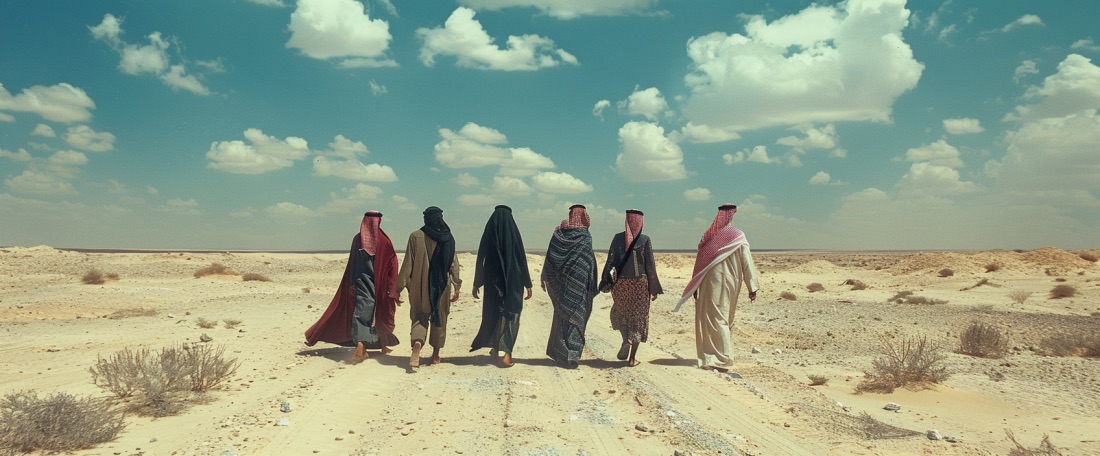Muslims Gather at Mount Arafat for Intense Worship and Reflection
MOUNT ARAFAT, Saudi Arabia: In a powerful display of faith and devotion, Muslims from all corners of the globe converged on Mount Arafat in Saudi Arabia under the scorching sun for a day of intense worship and contemplation.
Known as the hill of mercy, Mount Arafat is the pinnacle of the Hajj pilgrimage, a momentous occasion for pilgrims who stand united, seeking God’s mercy, blessings, prosperity, and good health. Situated approximately 20 kilometers southeast of Makkah, this sacred mount holds significant historical importance, as it is believed that Prophet Muhammad delivered his Farewell Sermon here 1,435 years ago, emphasizing the principles of equality and unity among Muslims.
“It’s indescribable,” remarked Ahmed Tukeyia, an Egyptian pilgrim, upon his arrival at a tent camp near Mount Arafat on Friday evening.
Muslim pilgrims gather at top of the rocky hill known as the Mountain of Mercy, on the Plain of Arafat, during the annual Hajj pilgrimage, near the holy city of Mecca, Saudi Arabia, Saturday, June 15, 2024. (AP)
The Hajj pilgrimage, one of the largest religious gatherings globally, commenced officially on Friday as pilgrims made their way from Makkah’s Grand Mosque to Mina, a desert plain on the outskirts of the city.
With Saudi authorities anticipating a turnout exceeding 2 million pilgrims this year, approaching levels seen before the COVID-19 pandemic, the Hajj pilgrimage remains a fundamental pillar of Islam, mandatory for all physically and financially capable Muslims to undertake at least once in their lifetime.
GALLERY: Hajj 2024: Muslims converge at Mount Arafat as pilgrimage reaches peak
The rituals of Hajj commemorate the stories of Prophet Ibrahim, his son Prophet Ismail, and Ismail’s mother Hajjar, as narrated in the Qur’an. The timing of Hajj varies each year, occurring over five days in the second week of Dhu Al-Hijjah, the final month of the Islamic lunar calendar.
Most Hajj rituals take place outdoors, often under sweltering temperatures that can soar above 40 degrees Celsius (104 degrees Fahrenheit). The Health Ministry has issued warnings of temperatures reaching 48 degrees Celsius (118 degrees Fahrenheit) at the holy sites, advising pilgrims to use umbrellas and stay hydrated.
Muslim pilgrims arrive at the Mountain of Mercy, on the Plain of Arafat, during the annual Hajj pilgrimage, near the holy city of Makkah, Saudi Arabia, Saturday, June 15, 2024. (AP)
Following the day of worship at Arafat, pilgrims will proceed to Muzdalifa to collect pebbles for the symbolic stoning of pillars representing the devil in Mina. Subsequently, they return to Mina for three days, coinciding with the festive Eid Al-Adha holiday, where affluent Muslims worldwide sacrifice livestock and distribute the meat to the less fortunate. The pilgrimage concludes with a final circumambulation, known as Farewell Tawaf, in Makkah.
After completing the Hajj, men traditionally shave their heads while women trim a lock of hair as a symbol of renewal. Many pilgrims then depart Makkah for Medina, 340 kilometers (210 miles) away, to offer prayers at Prophet Muhammad’s tomb in the Sacred Chamber, located within the prophet’s mosque—a site of immense spiritual significance in Islam alongside the Grand Mosque in Makkah and the Al Aqsa Mosque in Jerusalem.
Recent years have seen Saudi authorities implement extensive measures to enhance safety and accessibility, including deploying tens of thousands of security personnel to manage crowds, constructing a high-speed rail link to transport pilgrims between the holy sites, and introducing electronic gates for entry. Renovations and expansions at the Grand Mosque are also underway to accommodate the growing number of pilgrims.

